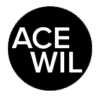Equity Diversity Inclusion Resource Hub – Addressing Discrimination and Barriers to Inclusion
This project examines the barriers in WIL specifically faced by marginalized student groups such as international, refugee, LQBTQ2S+ students, students with disabilities, and students from low socio-economic status backgrounds. The project explores tools and resources to help WIL employers and staff effectively address student barriers around discrimination and inclusion.
Project Information
Institution(s): Simon Fraser University
Original Project Name: ACE-WIL Equity, Diversity, Inclusion Resource Hub #118
Status: In-Progress
Project Dates: February 1, 2020 — September 30, 2021
Project Contact:
Amie McLean
amie_mclean@sfu.ca
Project Contributors: Akanksha Thakur (Project Lead)
The resources below have been curated from the project’s research findings and to promote more inclusive and equitable ways forward in WIL. The aim of these resources is for WIL practitioners and employers to feel better equipped in understanding the diverse and interconnected needs of WIL’s diverse students. These resources are not intended as a comprehensive set of strategies and/or tools for achieving goals of equity, diversity and inclusion in WIL and the workplace. We hope you will use these resources as a starting point for further education and understanding, consequently enabling more inclusive and equitable ways forward.
Read the Final Project Report >



